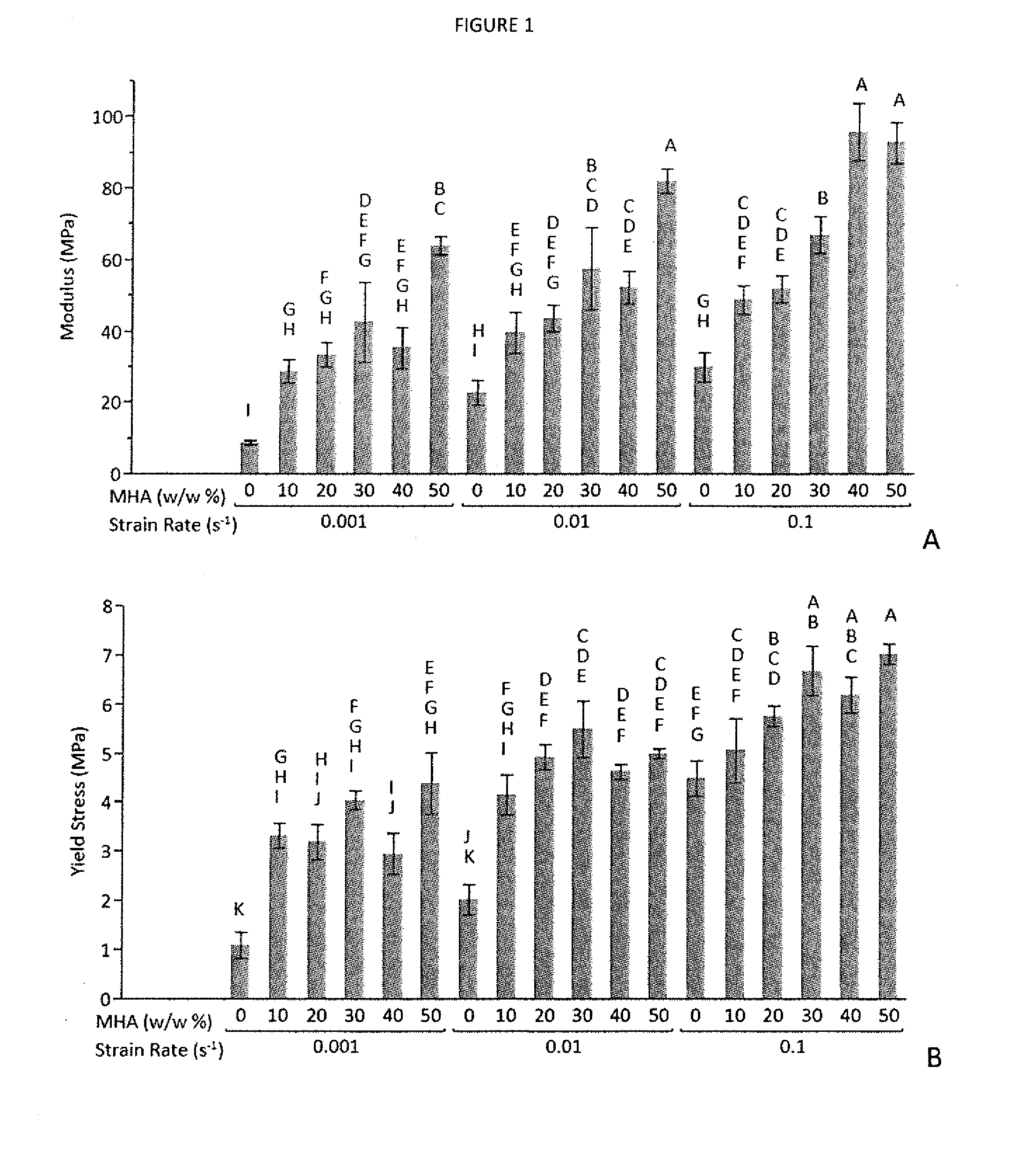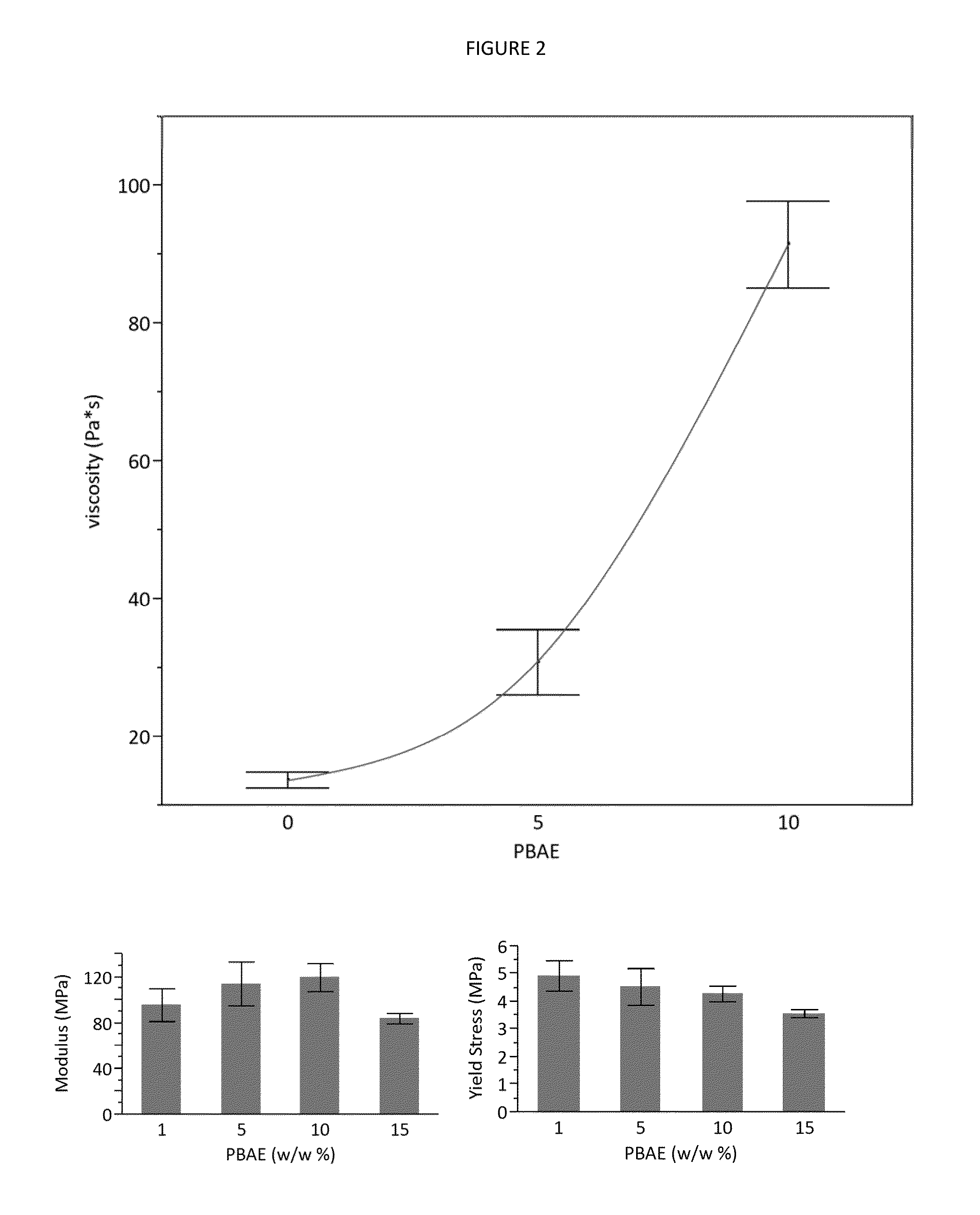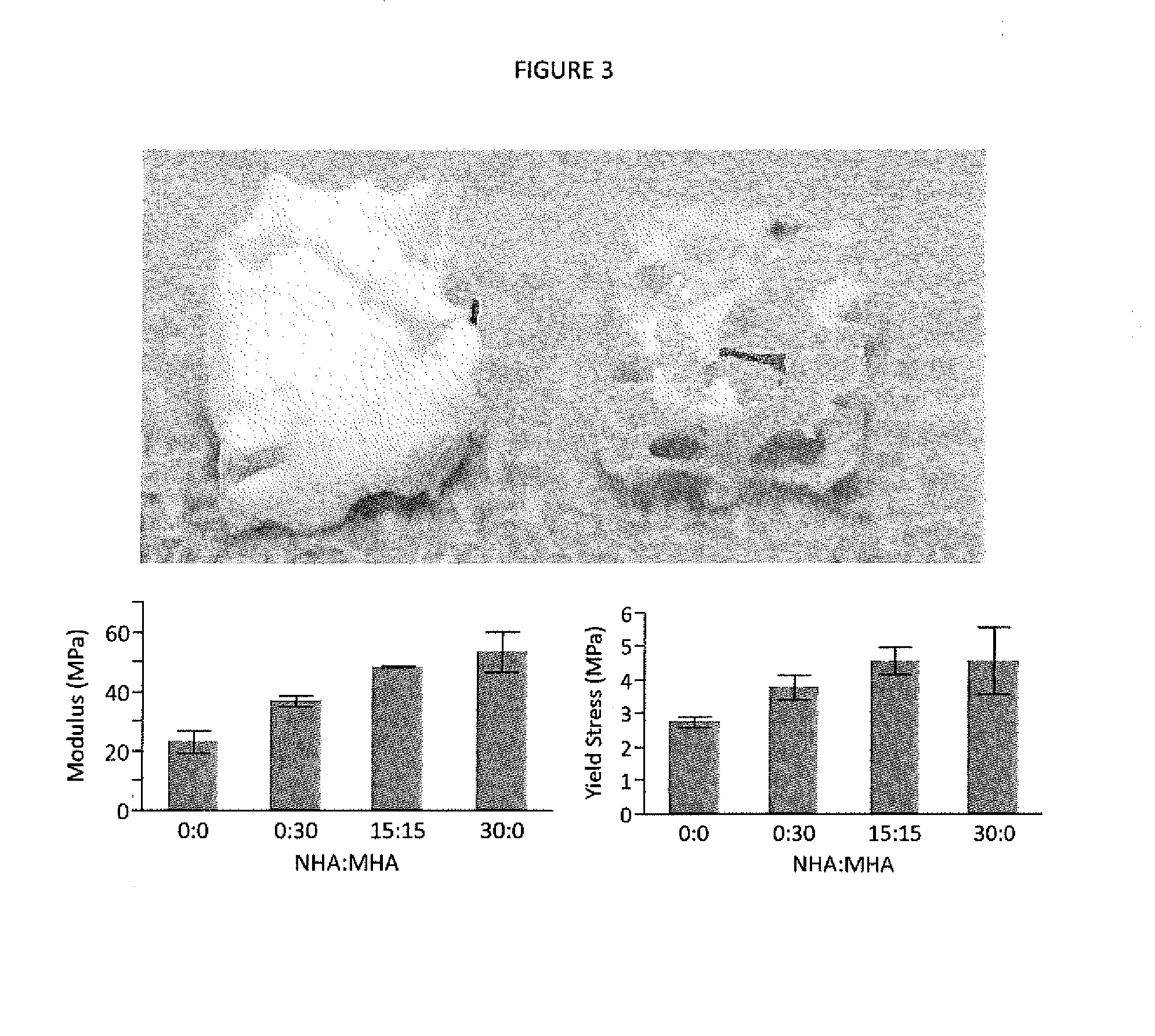Small molecule drug release from in situ forming degradable scaffolds incorporating hydrogels and bioceramic microparticles
a bioceramic microparticle, in situ forming technology, applied in the direction of biocide, inorganic non-active ingredients, prosthesis, etc., can solve the problem of little structural suppor
- Summary
- Abstract
- Description
- Claims
- Application Information
AI Technical Summary
Benefits of technology
Problems solved by technology
Method used
Image
Examples
example 1
[0077]In situ forming implants are an attractive choice for controlled drug release into a fixed location. Currently, rapidly solidifying solvent exchange systems suffer from a high initial burst, and sustained release behavior is tied to polymer precipitation and degradation rate. The present example investigated addition of hydroxyapatite (HA) and drug-loaded poly(β-amino ester) (PBAE) microparticles to in situ forming poly(lactic-co-glycolic acid) (PLGA)-based systems to prolong release and reduce burst. PBAEs were synthesized, imbibed with simvastatin (osteogenic) or clodronate (anti-resorptive), and then ground into microparticles. Microparticles were mixed with or without HA into a PLGA solution, and the mixture was injected into buffer, leading to precipitation and creating solid scaffolds with embedded HA and PBAE microparticles. Simvastatin release was prolonged through 30 days, and burst release was reduced from 81% to 39% when loaded into PBAE microparticles. Clodronate b...
example 2
[0109]In situ forming scaffolds containing hydroxyapatite micro- and nanoparticles were characterized to determine their mechanical properties, injectability, and microarchitecture. Scaffolds were prepared with various concentrations of hydroxyapatite, as well as poly(β-amino ester) microparticles that facilitate drug delivery. Strength was increased three-fold, from 2 to 6 MPa, while compressive modulus was improved 6-fold, from 24 to 141 MPa, via the addition of 30% nano-hydroxyapatite, which provided greater benefits at equivalent concentrations compared to micro-hydroxyapatite. Scaffolds retained a uniformly porous microarchitecture, and hydroxyapatite particles were distributed evenly throughout the PLGA phase. Injectability, determined by the force required to inject 0.5 mL of material within 60 seconds, remained clinically acceptable at <50 N at 30% w / w hydroxyapatite and up to 10% w / w PBAE microparticles. Ex vivo injections into intact porcine femoral heads increased compres...
example 3
[0136]Poly(β-amino ester) (PBAE) hydrogel microparticles were incorporated into a PLGA matrix to provide several new functions: mechanical support, porosity, space-filling, and controlled co-delivery of antibiotics and osteogenic drugs. PBAE-containing PLGA ISIs are more effective space-filling scaffolds and offer improved release kinetics compared to existing ISIs used to treat periodontitis.
Materials
[0137]Diethylene glycol diacrylate and poly(ethylene glycol) 400 diacrylate (PEG400DA) were bought from Polysciences, Inc. (Warrington, Pa.). High molecular weight PLGA (HMW PLGA; 50:50 lactide:glycolide, 0.55-0.75 dL / g in hexafluoroisopropanol, carboxylate-terminated) and low molecular weight PLGA (LMW PLGA; 50:50 lactide:glycolide, 0.15-0.25 dL / g in hexafluoroisopropanol, carboxylate-terminated) were purchased from DURECT (Birmingham, Ala.). 2,2-Dimethoxy-2-phenylacetophenone (DMPA), N-methyl-2-pyrrolidone (NMP), gelatin (from porcine skin, type A), glutaraldehyde (25%, grade I), aga...
PUM
| Property | Measurement | Unit |
|---|---|---|
| Fraction | aaaaa | aaaaa |
| Fraction | aaaaa | aaaaa |
| Fraction | aaaaa | aaaaa |
Abstract
Description
Claims
Application Information
 Login to View More
Login to View More - R&D
- Intellectual Property
- Life Sciences
- Materials
- Tech Scout
- Unparalleled Data Quality
- Higher Quality Content
- 60% Fewer Hallucinations
Browse by: Latest US Patents, China's latest patents, Technical Efficacy Thesaurus, Application Domain, Technology Topic, Popular Technical Reports.
© 2025 PatSnap. All rights reserved.Legal|Privacy policy|Modern Slavery Act Transparency Statement|Sitemap|About US| Contact US: help@patsnap.com



